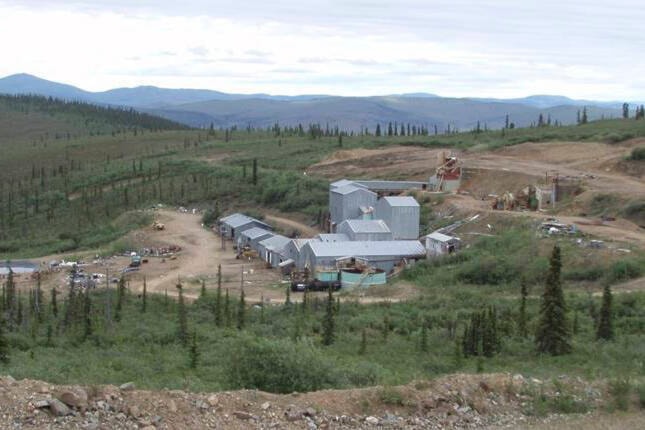The Little Salmon Carmacks First Nation (LSCFN) claims that remediation work at an abandoned mine site in its traditional territory is only making things worse and so they are asking the Yukon Water Board to step in and change things.
The subject of LSCFN’s complaint is the Mount Nansen mine site, a former gold and silver project located west of Carmacks that was heralded as an environmental disaster and an embarrassment to Canada, the Yukon and the mining firm involved when it was abandoned in 1999.
LSCFN says that since at least 1996, the site has been an active and increasing source of pollution. The company that had been mining there before abandoning it, BYG Natural Resources Inc. was fined hundreds of thousands of dollars for failed toxicity tests and unacceptable concentrations of zinc and cyanide.
The First Nation’s complaint to the water board deals with the company that has been performing remediation and care and maintenance work at the site since 2019.
Mount Nansen Remediation Limited Partnership (MNRLP) is the company behind the remediation work. MNRLP is a joint venture of Ensero Solutions and JDS Energy and Mining. A project timeline posted to MNLRP’s website shows a planning phase after they took over the site and then care and maintenance work beginning in 2021. Seasonal site remediation and cleanup work is set to begin in 2025.
According to a lengthy application to the water board filed on Feb. 21, LSCFN sees the state of things at the Mount Nansen site as a violation of the First Nation’s treaty rights as negotiated in its final agreements.
“Mount Nansen is a special place,” stated LSCFN Chief Nicole Tom in a statement published as an advertisement in the March 31 issue of the Yukon News.
“For as long as we can remember it has been a treasured hunting, gathering and meeting area in the heart of LSCFN traditional territory and at the heart of LSCFN way of life. And as LSCFN citizens are all too aware, the area has been devastated by decades of contamination from mining operations in the 1990s that have never been remediated.”
Both in the statement and in water board filings, LSCFN claim that MNRLP’s remediation project is making things worse at the site. The lengthy volume presented to the water board claims that the monitoring and water treatment being undertaken are insufficient and the MNRLP has regularly breached the terms of its water license for the project. LSCFN claims that there are two-dozen known contaminants at the site and the treatment plant there only treats for five of them. They also claim that the monitoring at the site is insufficient to understand the full scope of contamination.
The First Nation takes issue with the set of guidelines being used for water treatment. They find the standards insufficient to protect aquatic life and human health and state the standards undermine the process of returning the site to pre-mining conditions, as required by the closure objectives for the site. Also claimed is a focus on surface water monitoring when contamination has been documented well below the surface.
“LSCFN citizens cannot now meaningfully exercise their harvesting rights anywhere near Mount Nansen because without clean water, there are few animals, fish, berries, and medicines to harvest and what remains is polluted, unhealthy, and unsafe to consume,” the filing with the water board reads.
“While fish used to be abundant in Dome Creek and Victoria Creek, Dome Creek is no longer fish-bearing and the fish in Victoria Creek are unsafe to consume.”
Much of the First Nation’s correspondence with the water board appended to the publicly available licensing documents for the remediation project, has contained concerns about contamination in the creeks and the design of the water treatment plant. These concerns date back to at least 2020.
LSCFN is seeking oral public hearings and eventual amendments to the water license. The First Nation’s submission also wants the water board to promptly take steps to bring MNRLP into compliance with the terms of the license. LSCFN’s submission also seeks compensation for loss and damage caused by the contamination to be furnished by MNRLP.
Prior to this, MNRLP will submit its own documentation to the water board but they haven’t done so yet.
A call to MNRLP’s Whitehorse office requesting comment was not returned.
Contact Jim Elliot at jim.elliot@yukon-news.com
